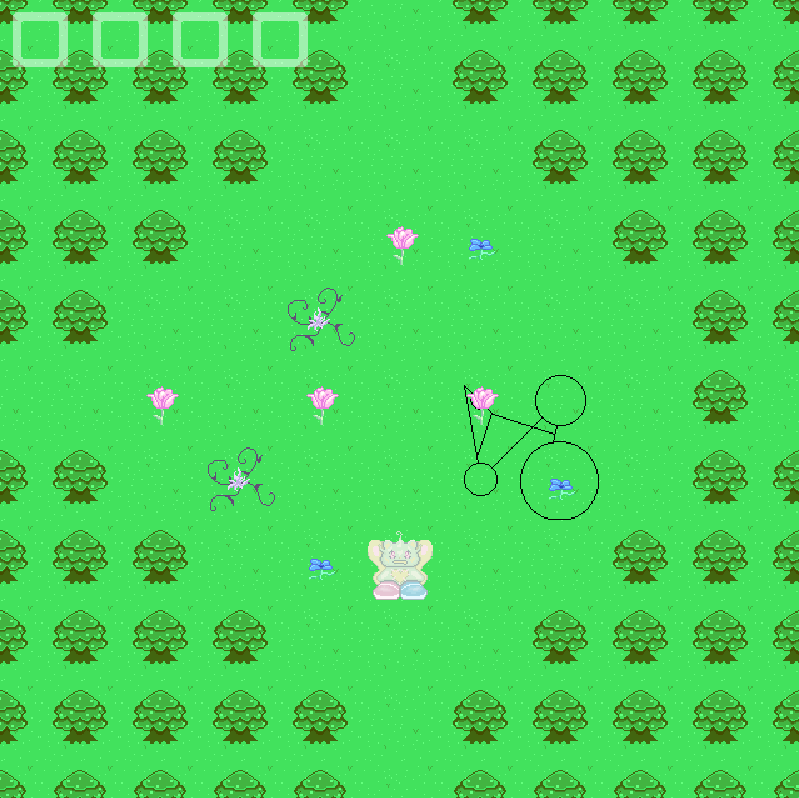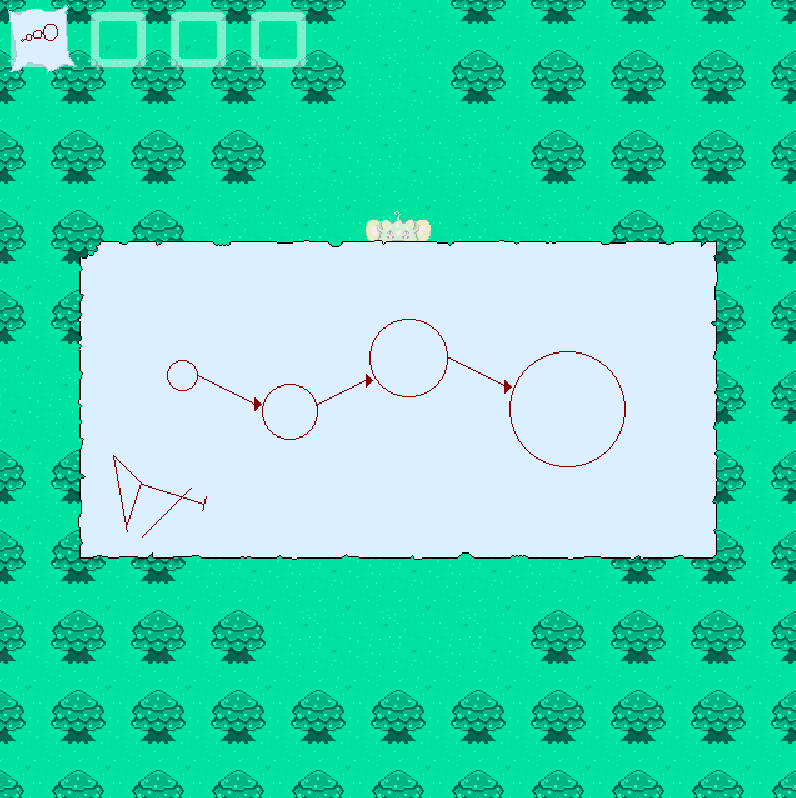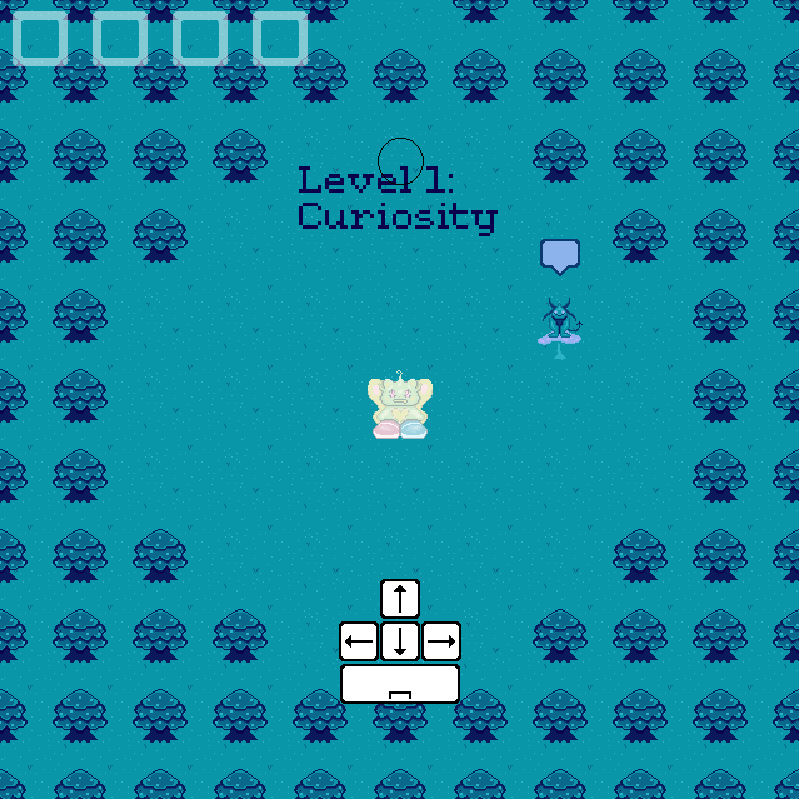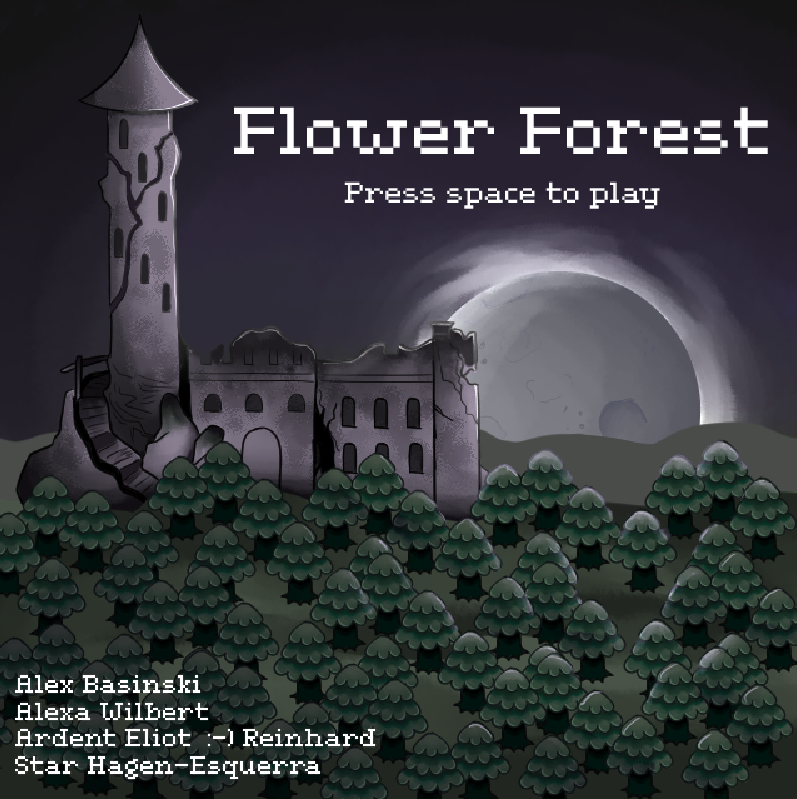


I was the main programmer, systems designer, and level designer on the four-person team who made this game. We built it over the course of about 3 weeks in Phaser, a framework for making HTML games using Javascript. Using this framework, I programmed all of the game’s systems from the ground up: from the game’s grid-based movement, to a doppelganger of the player with programmable behavior, to the puzzle-rituals which open doors if and only if their various circles are filled with flowers in the correct order. I was also the one who designed those systems prior to their implementation, and I used the level editor software Tiled to design and lay out all the levels in the game. A standout in my portfolio, I actually did NOT have a hand in this game’s writing — that was the wonderful and talented Ardent Eliot Reinhard.
Flower Forest is a top-down puzzle game about getting lost in a strange and unreal forest while looking for the fae who stole your name. My goals for this game were to create a single simple mechanic that was engaging and versatile enough to hold a player’s interest for the course of the entire game, and to design the levels of the game such that the player could not avoid feeling lost, confused, and (once the doppelganger makes its appearance) unsettled. I’m very happy with the results: individual “rooms” in the Forest look very similar to each other and link together in physically impossible ways, with few landmarks other than the flowers the player can choose to leave behind like breadcrumbs. The puzzle-rituals serve their purpose wonderfully! They’re cryptic and unclear, but the player is taught piece by piece how to solve them with minimal textual explanation — allowing the player to savor the feeling of figuring things out themself. The doppelganger is probably my favorite thing I did on this project. It’s a very simple thing, it’s just a flipped sprite of the player that moves based on a script it reads or (during the final level) by flipping the player’s inputs, but its similarity to the player and the fact that it is only seen in brief glimpses until later in the game makes it a startlingly effective tool for unsettling players and making the woods feel less safe. Some players don’t react as strongly to it, of course, but that’s natural. And finally, I’m very happy with the story I was able to tell through the level design alone. The first level feels different from the second, and the third feels drastically different from either of the levels that came before it — and taken together they form a story without words.
